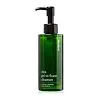What's inside
What's inside
 Key Ingredients
Key Ingredients

 Benefits
Benefits

 Concerns
Concerns

 Ingredients Side-by-side
Ingredients Side-by-side

Water
Skin ConditioningC12-15 Alkyl Benzoate
AntimicrobialGlycerin
HumectantDecyl Glucoside
CleansingCetearyl Alcohol
EmollientSqualane
EmollientPolysorbate 60
EmulsifyingNiacinamide
SmoothingSodium Cocoyl Glutamate
CleansingAlthaea Officinalis Root Extract
Skin ConditioningArnica Montana Flower Extract
MaskingCalendula Officinalis Flower Extract
MaskingAvena Sativa Kernel Flour
AbrasivePanthenol
Skin ConditioningAcrylates/C10-30 Alkyl Acrylate Crosspolymer
Emulsion StabilisingXanthan Gum
EmulsifyingPotassium Sorbate
PreservativeTrisodium Ethylenediamine Disuccinate
Butylene Glycol
HumectantTocopherol
AntioxidantEthylhexylglycerin
Skin ConditioningPhenoxyethanol
PreservativeWater, C12-15 Alkyl Benzoate, Glycerin, Decyl Glucoside, Cetearyl Alcohol, Squalane, Polysorbate 60, Niacinamide, Sodium Cocoyl Glutamate, Althaea Officinalis Root Extract, Arnica Montana Flower Extract, Calendula Officinalis Flower Extract, Avena Sativa Kernel Flour, Panthenol, Acrylates/C10-30 Alkyl Acrylate Crosspolymer, Xanthan Gum, Potassium Sorbate, Trisodium Ethylenediamine Disuccinate, Butylene Glycol, Tocopherol, Ethylhexylglycerin, Phenoxyethanol
Water
Skin ConditioningDisodium Cocoamphodiacetate
CleansingLauric Acid
CleansingMyristic Acid
CleansingGlycerin
HumectantPotassium Hydroxide
BufferingSodium Chloride
Masking1,2-Hexanediol
Skin ConditioningDecyl Glucoside
CleansingPolyglyceryl-10 Laurate
Skin ConditioningEthylhexylglycerin
Skin ConditioningMelaleuca Alternifolia Leaf Oil
AntioxidantButylene Glycol
HumectantHexylene Glycol
EmulsifyingHydrogenated Lecithin
EmulsifyingCentella Asiatica Extract
CleansingFicus Carica Fruit Extract
HumectantAmaranthus Caudatus Seed Extract
Skin ConditioningUlmus Davidiana Root Extract
Skin ConditioningCalendula Officinalis Flower Extract
MaskingMelaleuca Alternifolia Leaf Extract
PerfumingCeramide NP
Skin ConditioningTocopherol
AntioxidantSalix Alba Bark Extract
AstringentEthyl Hexanediol
SolventGluconolactone
Skin ConditioningWater, Disodium Cocoamphodiacetate, Lauric Acid, Myristic Acid, Glycerin, Potassium Hydroxide, Sodium Chloride, 1,2-Hexanediol, Decyl Glucoside, Polyglyceryl-10 Laurate, Ethylhexylglycerin, Melaleuca Alternifolia Leaf Oil, Butylene Glycol, Hexylene Glycol, Hydrogenated Lecithin, Centella Asiatica Extract, Ficus Carica Fruit Extract, Amaranthus Caudatus Seed Extract, Ulmus Davidiana Root Extract, Calendula Officinalis Flower Extract, Melaleuca Alternifolia Leaf Extract, Ceramide NP, Tocopherol, Salix Alba Bark Extract, Ethyl Hexanediol, Gluconolactone
Ingredients Explained
These ingredients are found in both products.
Ingredients higher up in an ingredient list are typically present in a larger amount.
Butylene Glycol (or BG) is used within cosmetic products for a few different reasons:
Overall, Butylene Glycol is a safe and well-rounded ingredient that works well with other ingredients.
Though this ingredient works well with most skin types, some people with sensitive skin may experience a reaction such as allergic rashes, closed comedones, or itchiness.
Learn more about Butylene GlycolCalendula Officinalis Flower Extract comes from the common Marigold plant. This ingredient is a skin conditioner.
Marigolds contain flavonoids. Flavonoids are a group of substances found naturally in plants. They possess antioxidant and inflammation properties.
This ingredient soothes skin inflammation by inhibiting inhibiting a part of the inflammation process.
Marigolds have been used in traditional medicine throughout Asia and Europe.
Learn more about Calendula Officinalis Flower ExtractDecyl Glucoside is a glucose-based surfactant and emulsion stabilizer. It is created by reacting glucose with the fatty acids from plants.
Surfactants help clean the skin by trapping oil, sebum, and dirt to be washed away. As an emulsion stabilizer, it stabilizes the ingredients in a product by preventing them from separating.
This ingredient is biodegradable and non-toxic. This ingredient is commonly found in baby shampoos.
Decyl Glucoside is sometimes used to stabilize the UV filter Tinosorb.
Learn more about Decyl GlucosideEthylhexylglycerin (we can't pronounce this either) is commonly used as a preservative and skin softener. It is derived from glyceryl.
You might see Ethylhexylglycerin often paired with other preservatives such as phenoxyethanol. Ethylhexylglycerin has been found to increase the effectiveness of these other preservatives.
Glycerin is already naturally found in your skin. It helps moisturize and protect your skin.
A study from 2016 found glycerin to be more effective as a humectant than AHAs and hyaluronic acid.
As a humectant, it helps the skin stay hydrated by pulling moisture to your skin. The low molecular weight of glycerin allows it to pull moisture into the deeper layers of your skin.
Hydrated skin improves your skin barrier; Your skin barrier helps protect against irritants and bacteria.
Glycerin has also been found to have antimicrobial and antiviral properties. Due to these properties, glycerin is often used in wound and burn treatments.
In cosmetics, glycerin is usually derived from plants such as soybean or palm. However, it can also be sourced from animals, such as tallow or animal fat.
This ingredient is organic, colorless, odorless, and non-toxic.
Glycerin is the name for this ingredient in American English. British English uses Glycerol/Glycerine.
Learn more about GlycerinTocopherol (also known as Vitamin E) is a common antioxidant used to help protect the skin from free-radicals and strengthen the skin barrier. It's also fat soluble - this means our skin is great at absorbing it.
Vitamin E also helps keep your natural skin lipids healthy. Your lipid skin barrier naturally consists of lipids, ceramides, and fatty acids. Vitamin E offers extra protection for your skin’s lipid barrier, keeping your skin healthy and nourished.
Another benefit is a bit of UV protection. Vitamin E helps reduce the damage caused by UVB rays. (It should not replace your sunscreen). Combining it with Vitamin C can decrease sunburned cells and hyperpigmentation after UV exposure.
You might have noticed Vitamin E + C often paired together. This is because it is great at stabilizing Vitamin C. Using the two together helps increase the effectiveness of both ingredients.
There are often claims that Vitamin E can reduce/prevent scarring, but these claims haven't been confirmed by scientific research.
Learn more about TocopherolWater. It's the most common cosmetic ingredient of all. You'll usually see it at the top of ingredient lists, meaning that it makes up the largest part of the product.
So why is it so popular? Water most often acts as a solvent - this means that it helps dissolve other ingredients into the formulation.
You'll also recognize water as that liquid we all need to stay alive. If you see this, drink a glass of water. Stay hydrated!
Learn more about Water